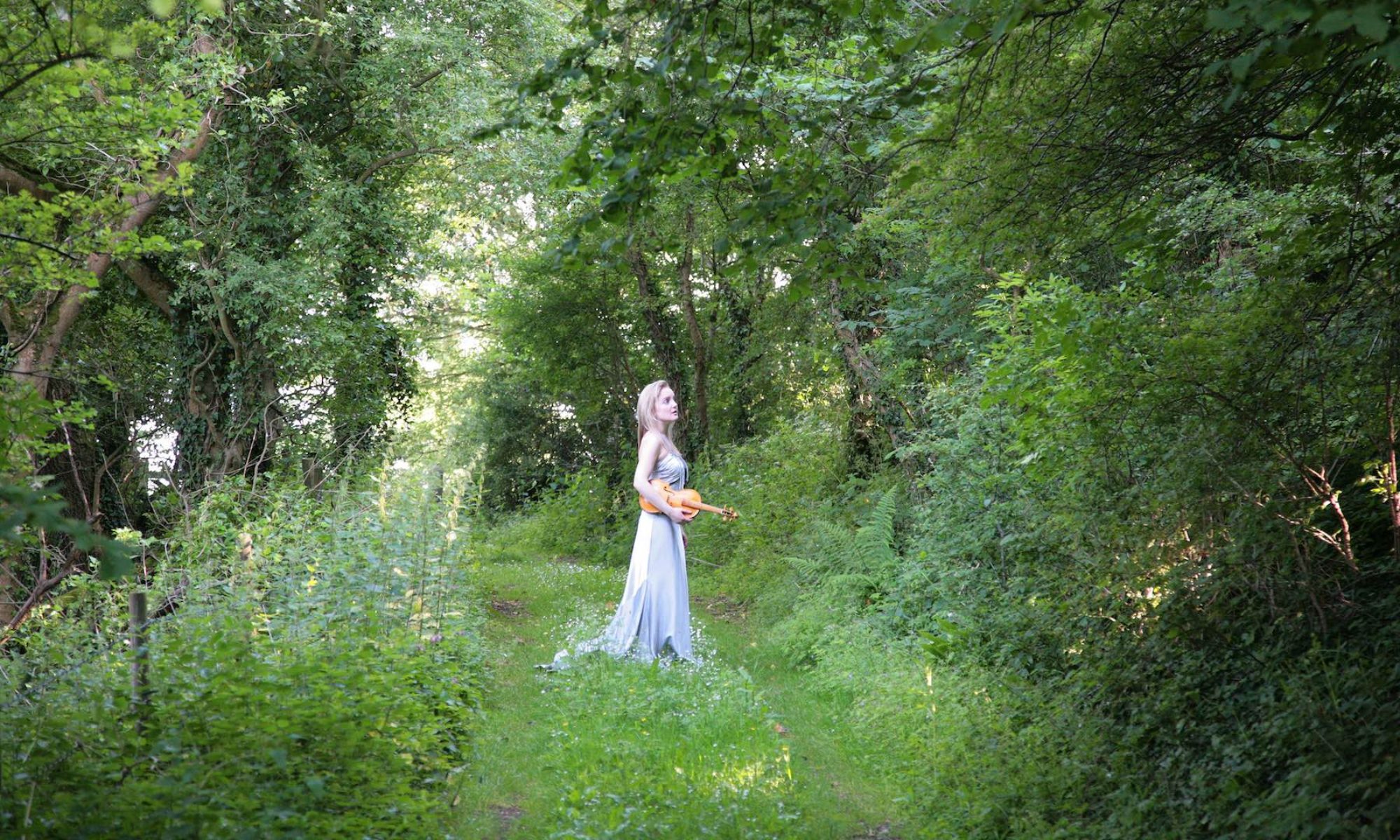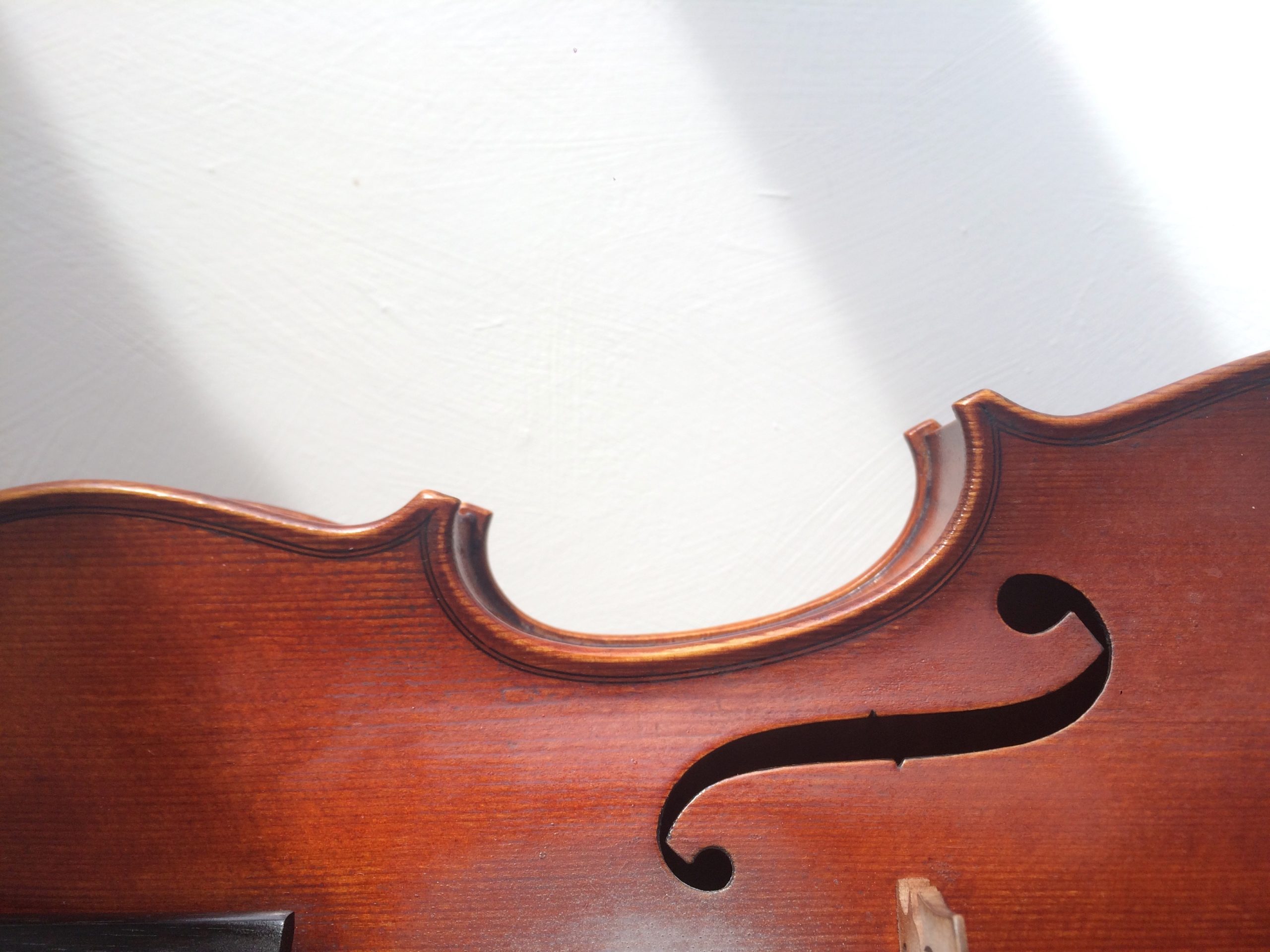‘Historically-informed performance’. It’s a mouthful. It’s one way to describe what I study with the help of my baroque violin. And it’s something that musicians and scholars have been working on for half a century.
Another common term for it is simply ‘early music.’
But ‘early music’ isn’t the best term. It gets applied to music of the eighteenth century, and yet people don’t tend to describe Pope and Fielding as writers of ‘early literature’.
‘Historically-informed performance’ is better. The adjective ‘early’ is too relative to be useful. It possibly makes sense when considering the relationship between modern and historical versions of instruments. It’s understandable to think of a seventeenth-century violin as an early version of a modern violin, but for me this thinking is reminiscent of the old idea that ‘Early Man’ was an imperfect version of today’s people, marching onwards, increasingly upright. The more sophisticated approach is to think of different species as varying adaptations to specific times and places. The various on-the-arm bowed string instruments of previous centuries are perhaps ancestors, certainly family members, but the idea of ‘early’ should be followed by the question: ‘compared to what?’
So, what is historically-informed performance, and why is this term more useful?
It’s an adaptation of another phrase, ‘historical performance’. I, and many others, dislike that phrase because it places the music and one’s efforts to play it decidedly in the past. The adjusted version, ‘historically-informed’, suggests that the performer is aware that they are performing in the present day and they are using information from the past to help them.
People who try to play in an historically-informed way think that for a convincing performance of music from another time, it’s helpful to learn what you can about the context in which the music was written.
Musicians use a variety of sources to learn about context. There are manuscripts and first editions. There are treatises and manuals written for the various instruments, some of them beautiful and inspiring pieces of writing. There are letters, diaries, pictures.
Using old instruments in their original setup or copies of old instruments can be part of it. Learning to play a historical version of your instrument teaches you an enormous amount. It changes your approach, outlook, sound-world. And speaking as a violinist, I would now find it really difficult to play baroque music with a modern bow; this piece of equipment is designed to suit an entirely different style. (That’s why it’s really, really stupid to suggest that any equipment designed at a later date is automatically better, whatever music you’re using it to play).
But instruments alone won’t make you historically-informed. Accepting one or two rules but without changing any fundamentals or questioning your sources isn’t HIP either.
Let’s try to understand the wider ideas behind historically-informed performance.
A large part of HIP thinking and playing springs from the realisation that notation has had different forms and functions down the ages. If you know about this, it can inspire a fresh, interesting, and immediate performing style.
For instance, one rule of thumb is that as you look back to the eighteenth century and earlier, you start to encounter scores that are less prescriptive than those that you might have been trained to read. Musicians were expected to add elements (ornaments, cadenzas, figured bass realisation) from their own initiative. The vast number of treatises from different time periods can help you to do the same in an appropriate style. In baroque scores, you often only encounter very basic written dynamics (such as obvious echoes). That doesn’t mean that you shouldn’t play with dynamics! If you’re aware that not everything is written down, you might start to feel as though you’re using notation as a tool to create something which can actually be very contemporary even as it invokes the guidance of historical sources.
That said, old scores also contain information that’s easy to miss today. Articulation marks could mean different things; slurs could carry additional meanings; there was a concept of hierarchy between beats and bars and bowstrokes that we don’t get taught as children today; names of dance forms and tempo words referenced a wealth of cultural knowledge that a conventional modern training won’t automatically give you. A person who says ‘I don’t like these rules; I can play just as I want to, without being confined to historical sources’ might as well change the notes as well; they might as well tear up the score and improvise. It’s not logical to pay attention to one part of a score but not another.
As your knowledge increases, you can gather more and more information from a score. It’s exciting when you first learn about the meanings that used to be attached to time signatures, that well into the seventeenth century they could represent proportions (3 in the space of 2, for instance, or 12 in the space of 8), and that they tell you about relative speeds – all related to a concept called ‘tactus’, which is something you learn about from studying history (I recommend a book by George Houle as a way in) and which is also, wonderfully, related to the beating of your own heart.
So HIP has nothing to do with brainlessly following rules, trying to pigeonhole everything, making performance more academic than heartfelt – accusations that many have thrown at it. We use our research not to give ourselves rules so much as tools.
I learnt the idea of ‘tools’ from violinist Margaret Faultless during my time in the baroque ensemble at Cambridge. It’s really helpful, as it puts the focus on the present and implies that you, the performer, must use your knowledge and show initiative. In rehearsal we would play a phrase in a succession of ways, using different tools each time: perhaps indicating awareness of hierarchy within the bar the first time, then thinking of hierarchy between bars, then playing only in a way that accentuated the harmony, then emphasizing the shape of the melody, and finally putting them all together.
After all this study, all this experimenting, what comes out ought to be interesting, emotionally immediate, affecting, exciting, and contemporary.
HIP thus stands in opposition to some ways of thinking about music that we have inherited – the idea of Werktreue, the infallible ‘composer’s intentions’ that we must try to live up to, the idea that there is an ideal version of the work floating Platonically somewhere, the notion that ‘the score’ is to be revered as though it were the Bible in church.
So, whilst HIP is undoubtedly concerned with history, and doing research, and delving as deeply as we can into the music we play, what comes out of it is actually pretty counter-cultural, a paradox that John Butt explores in Playing with History.
Forget claims of ‘authenticity’ – we’re over that now. We’re not interested in the moral high ground; it would be outrageous and arrogant to laugh at Oistrakh’s beautiful readings of Bach, for instance. We aren’t snobby about that composer being played on the piano, either.
There’s no one single key (excuse the pun) to historically-informed performance, and you can’t be sure that any given performance reflects the intentions of the composer or is an exact copy of how the piece was first performed. Rather, the quest to understand earlier ways of playing music, and the styles and sounds that composers knew, offers musicians useful tools to help us get towards the moving, satisfying and stylistically convincing performances that we seek.

